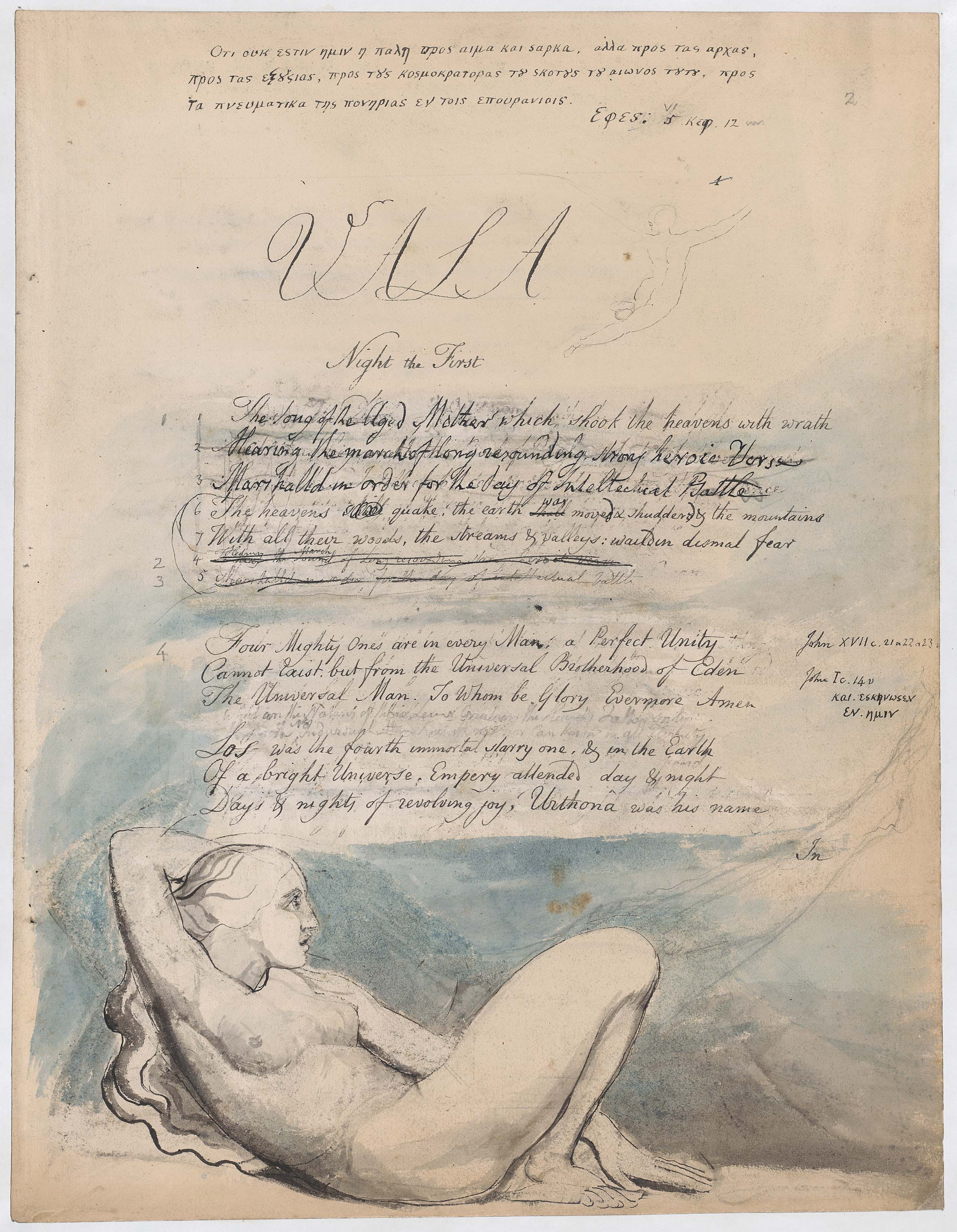As Mellon Fellows, Eitan, Serenity, Chris, and I have been semi-strategically embedded into a few faculty research projects that feature strong digital characteristics. We’re there to assist and learn as much as possible.
Since I had already attached myself to the William Blake Archive when I first arrived at UR last year, it was decided that I would continue with Blake and take on more challenging projects.
In one respect, working with the Blake Archive is a considerably different endeavor than working with the other affiliated projects because, well, it’s been around forever (in DH-years). As a landmark editorial project first conceptualized in the early ‘90s–the first digital edition to receive MLA’s “CSE Approved Edition” seal in 2005–the Blake Archive has been subsequently scrutinized as a case study in countless theoretical and pragmatic contexts.
So with such a “mature” project (as we lovingly call it), how could I possibly contribute? Well, even in 2014, the Blake Archive remains a hive of activity, with new Blake works added continuously among a flurry of technological updates. Here’s some current happenings–an ultra-brief State of the Archive–along with a few projects with which I’m participating.
Site Redesign
The Blake Archive is finally letting go of 1994 and is in the process of a complete redesign for the entire website. The redesign is still in the early stages, and mum’s the word on any specifics for now, but early wireframes look promising and alarmingly modern. As research assistants, students at UR and UNC Chapel Hill get to provide feedback and ask questions about the design process.
Vala, or the Four Zoas

Over the summer I joined Laura Whitebell and Hardeep Sidhu in “Team Color Code,” a sub-group tasked with making editorial progress on Blake’s notoriously difficult unfinished manuscript known as Vala, or the Four Zoas. The work now involves developing a viable XML schema for the manuscript’s many layers and moments of composition, as well as creating a dynamic web display for the transcription. While the encoding of the entire document will likely take years, we’re getting closer to a functional model. Rachel Lee presented on the Blake Archive’s Four Zoas work at a Huntington special symposium last year. Our current group is drafting an article about our most recent work for an upcoming special issue of 19.
Social Media
One of my self-delegated side projects is to continue developing the Blake Archive’s social media presence. Mostly that means regular blog posts and some Twitter activity. A few good recent posts, I think: here, here, and here. And tweet us @BlakeArchive!
Please check back with this blog for updates on Mellon collaboration with the Blake Archive, personal projects and ideas, and more DH activity at UR.
—————
Eric Loy is a PhD student in the Dept. of English at the University of Rochester.

